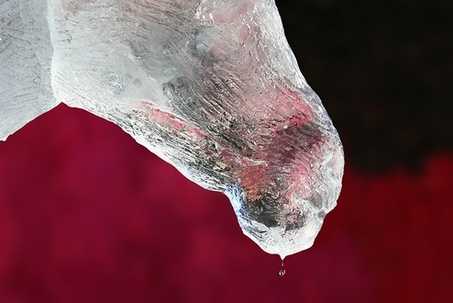
Every year, thousands of people flock to carnivals, exhibitions and competitions in cities around the world – Fairbanks, Sapporo, Moscow and others – to celebrate the expertise of ice sculptors. Knives flash, lanterns are hung (or lasers shone), chainsaws howl, and in a remarkably short space of time, buckets of frozen, pre-boiled water are turned into something unforgettable”¦.and increasingly short-lived.
This year’s renowned International Ice And Snow Sculpture Festival in the northern China town of Harbin was a soggier affair than normal – and since 2002, temperature higher than the Winter average of -16.8ºC have made for "sweaty" ice and precarious creations. That didn’t deter artists from creating the largest snow sculpture in the world (8.5 metres tall, 250 metres long) – but the signs are hardly encouraging.
Ice art is a poignant symbol of the fragility of our planet’s vital supplies of solid water, and is guaranteed to get people’s attention, such as with this sculpture of York Minster (England) back in 2001. It’s a delight for the senses. (There’s nothing like feeling ice-chilled air against your face).
So what’s the answer, apart from moving venues ever northwards? Refrigeration is effective but costly (and far from an energy-efficient solution). The same applies with pressure chambers – ice’s melting point can be raised by pumping out the air around it – but strolling round sculptures in a partial vacuum is unlikely to prove popular. Or perhaps a method may be found for “Ëœdoping’ ice with chemicals to keep it solid at higher temperatures. Somehow, high ice is quite possibly more distasteful than sweaty ice.
Image: Leo Reynolds
